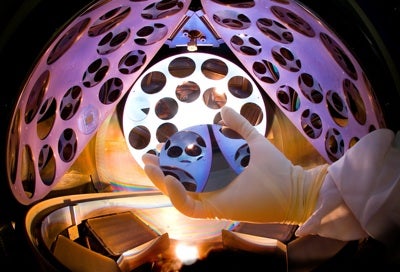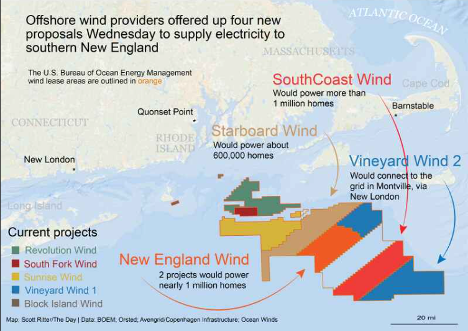New solar-cell efficiency record set

 Here’s a seemingly simple solar power fact*: the sun bathes Earth with enough energy in one hour (4.3 x 1020 joules) to more than fill all of humanity’s present energy use in a year (4.1 x 1020 joules). So how to convert it? In the world of solar energy harvesting, there’s a constant battle between cost and efficiency. On the one hand, complex and expensive triple-junction photovoltaic cells can turn more than 40 percent of the (specially concentrated) sunlight that falls on them into electricity. On the other, cheap, plastic solar cells under development convert less than 5 percent.
Here’s a seemingly simple solar power fact*: the sun bathes Earth with enough energy in one hour (4.3 x 1020 joules) to more than fill all of humanity’s present energy use in a year (4.1 x 1020 joules). So how to convert it? In the world of solar energy harvesting, there’s a constant battle between cost and efficiency. On the one hand, complex and expensive triple-junction photovoltaic cells can turn more than 40 percent of the (specially concentrated) sunlight that falls on them into electricity. On the other, cheap, plastic solar cells under development convert less than 5 percent.
In between, ubiquitous photovoltaics—the multicrystalline silicon solar panels cropping up on rooftops across the country and, indeed, the world—struggle to balance the need for (relatively) easy manufacturing and low cost with technology to get the most electrons for your solar buck.
Yesterday, Spectrolab announced that its newest triple-junction solar cells had achieved the world record in efficiency, converting 41.6 percent of specially concentrated sunlight into electricity. All told, a tiny cell just 0.3174 square centimeters turned the sunlight equivalent of nearly 364 suns into 4.805 watts. That kind of efficiency is why 60 percent of satellites in orbit today bear earlier iterations of the technology; that’s a total of roughly 640 kilowatts of Spectrolab cells circling Earth.
Those cells cost 40 cents per watt, according to the manufacturer—if you happen to have the sunlight equivalent of 500 suns streaming down while enjoying a temperature of 25 degrees Celsius. In reality, only specialized applications like satellites (and government contractors or agencies like NASA) can afford the technology.
More Earth-bound photovoltaics, like Suntech’s Pluto line of multicrystalline cells, which boasts 17.2 percent efficiency converting one sun’s light into electricity, or Suniva’s ARTisun single silicon crystal cells that can convert 18.5 percent of the sunshine into electricity, cost more than $2 per watt. Installation roughly doubles that price.
Bringing the cost of just the photovoltaic cells down to about $1 per watt is the magic number solar manufacturers are aiming for, figuring that will make them cost-competitive with electricity produced by burning natural gas. Some manufacturers of thin film cells (less efficient but cheaper), such as First Solar, claim to have reached that mark, with efficiencies around 10 percent. Finding a way to further boost the ability to convert sunlight into electricity while also lowering costs to this level would herald the true dawn for solar power—something anticipated since photovoltaics were discovered.
By David Biello – Image: Germanium wafer courtesy of Spectrolab.









